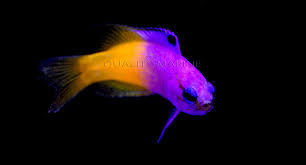Dragons hold an unparalleled position in Chinese folklore and culture. Unlike their Western counterparts, often depicted as fearsome and destructive, Chinese dragons are symbols of power, wisdom, and good fortune. These mythical creatures have woven themselves into the fabric of Chinese tradition, from ancient legends to modern celebrations. This article explores the origins, symbolism, and stories surrounding dragons in Chinese folklore.

Origins of the Chinese Dragon
The Chinese dragon, or “Lóng” (龙), traces its roots to ancient mythology and early cultural practices. Archaeological evidence, such as dragon-shaped artifacts from the Neolithic period, indicates that these creatures have been revered for thousands of years. The earliest depictions combined features of various animals, including the snake, fish, and eagle, reflecting a composite symbol of natural forces.
One theory suggests that the Chinese dragon evolved from totems of ancient tribes. Different tribes worshipped various animals, and as these tribes united, their symbols merged into the multifaceted dragon we recognize today. Another perspective links the dragon to early agricultural societies, where it symbolized water and its life-giving properties.
The Symbolism of the Dragon
In Chinese culture, the dragon embodies a complex array of meanings:
- Power and Authority: The dragon is often associated with the emperor, representing ultimate power. Emperors referred to themselves as “Dragons” and their thrones as “Dragon Thrones.” The dragon robe, a richly embroidered garment, was a symbol of imperial authority.
- Wisdom and Knowledge: Unlike the menacing dragons of Western tales, the Chinese dragon is wise and benevolent. It is said to possess supernatural insight, guiding rulers and sages.
- Good Fortune and Prosperity: The dragon is a harbinger of good luck. People believe its presence brings prosperity, and its image is often used in festivals, weddings, and business logos.
- Harmony with Nature: Dragons are seen as guardians of water bodies—rivers, lakes, and seas. They are rain-bringers, ensuring agricultural abundance.
Legends of the Chinese Dragon
Chinese folklore is replete with stories that showcase the dragon’s revered status. Here are some of the most famous legends:
1. The Dragon Kings
The Four Dragon Kings are deities who govern the seas: the East, South, West, and North Seas. These mythical rulers control rain and weather, ensuring balance in nature. The Dragon Kings are often petitioned in times of drought or flood, with elaborate rituals and offerings made in their honor.
2. The Yellow Emperor and the Dragon
One of the most celebrated myths is that of the Yellow Emperor (Huangdi), a legendary ruler credited with founding Chinese civilization. According to legend, Huangdi ascended to heaven on the back of a dragon after his reign, signifying his divine connection and the dragon’s role as a bridge between the mortal and celestial realms.
3. The Carp Transforming into a Dragon
The story of the Carp Jumping Over the Dragon Gate is a powerful allegory for perseverance and transformation. It tells of a carp that swims upstream against strong currents to leap over the mythical Dragon Gate, transforming into a dragon as a reward for its determination. This tale is often cited as inspiration for those facing challenges, particularly students preparing for exams.
Dragons in Chinese Festivals
Dragons are central to many traditional Chinese festivals, where their imagery comes alive in vibrant displays:
1. Dragon Boat Festival
The Dragon Boat Festival (Duanwu Festival) is one of China’s most iconic celebrations. Held in honor of Qu Yuan, a patriotic poet, the festival features dragon-shaped boats racing across the water. These boats, with their elaborate dragon heads and tails, symbolize strength and unity.
2. Chinese New Year
During the Chinese New Year, dragon dances are performed to ward off evil spirits and usher in prosperity. The dragon, manipulated by a team of dancers, weaves through the streets in a mesmerizing display of acrobatics and coordination. The longer the dragon, the greater the fortune it is believed to bring.
Dragons in Art and Architecture
Dragons are omnipresent in Chinese art and architecture. From ancient scrolls to modern motifs, their imagery conveys grandeur and elegance.
- Art: Traditional Chinese paintings often depict dragons amidst clouds or coiled around mountains, emphasizing their celestial and terrestrial connections. Porcelain and jade carvings also feature intricate dragon designs.
- Architecture: The Forbidden City in Beijing, the imperial palace of the Ming and Qing dynasties, showcases numerous dragon motifs. Dragons adorn the roof tiles, throne, and walls, reinforcing the emperor’s divine mandate.
Modern Cultural Significance
Despite the passage of time, the dragon remains a potent symbol in contemporary China. It is a national emblem, representing the country’s strength and resilience. The phrase “Descendants of the Dragon” is a popular way for Chinese people to describe their shared heritage and cultural pride.
In business and media, the dragon continues to inspire. Companies incorporate dragon motifs into logos, while films and literature celebrate its legendary status. The dragon has also become a symbol of China’s global presence, signifying both tradition and progress.
Conclusion
The dragon’s enduring legacy in Chinese folklore and culture underscores its profound impact on the nation’s identity. As a symbol of power, wisdom, and harmony, it transcends mythology to embody the values and aspirations of the Chinese people. Whether through ancient legends or modern interpretations, the dragon remains an awe-inspiring figure that bridges the past and the present. Its story is a testament to the rich tapestry of Chinese tradition, where myth and reality intertwine to create a cultural treasure.










